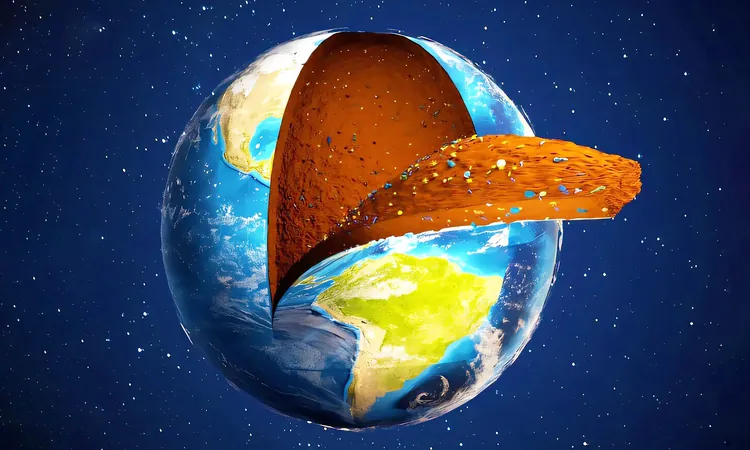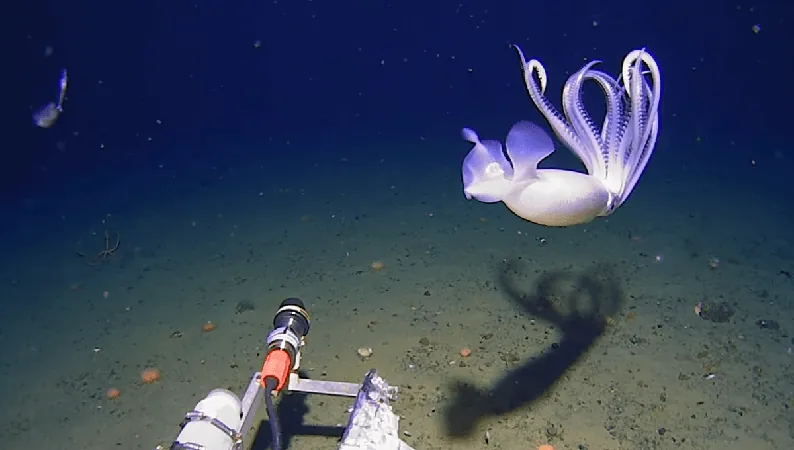
Unveiling the Mysteries of Earth's Deep Soil: New Microbes Discovered!
2025-04-13
Author: Charlotte
A Hidden World Beneath Our Feet
Microbes are everywhere, but some of the most crucial ones thrive far beneath the Earth's surface. A groundbreaking study has unveiled an entirely new group of microbes in deep soil—silent yet essential purifiers of our drinking water.
Enter Earth's Critical Zone
Researchers from Michigan State University are diving into one of the least explored areas of our world: the 'Critical Zone.' This underground realm is vital for sustaining life on Earth, regulating processes like water purification and nutrient cycling.
"The Critical Zone extends from treetops down to depths of up to 700 feet," explains James Tiedje, a leading microbiologist. This largely unidentified area is fundamental to food production and ecosystem health.
Discovery of a New Microbial Phylum
By collecting deep soil samples from Iowa and China, known for their nutrient-rich soils, the research team stumbled upon a new phylum of microbes named CSP1-3. This discovery transcends typical microbial findings—this isn't just a new strain, but an entirely different branch of life.
Their research suggests that these microbes could be more widespread than previously thought, making this discovery even more significant.
Tracing Their Ancient Roots
Delving into the DNA of these microbes revealed a fascinating evolutionary history. Ancestors of CSP1-3 once thrived in freshwater and hot spring environments millions of years ago before evolving to adapt to the depths of the soil.
What’s astonishing is their current abundance and activity. Unlike what many might assume—that they lie dormant in the soil—CSP1-3 are vibrant, making up a significant portion of the microbial community.
Earth’s Natural Water Filter
Soil isn’t just dirt; it acts as the Earth’s largest water filter. As rainwater seeps through various soil layers, it's cleansed through intricate physical, chemical, and biological processes. Most of this purification occurs in the deeper soils where CSP1-3 actively break down remnants of carbon and nitrogen, ensuring clean groundwater reaches our aquifers.
Future Plans for Exploration
The next aim for the research team is to cultivate CSP1-3 in laboratory settings—a notoriously challenging endeavor given the unique environmental needs of these microbes. Inspired by their ancestry in hot springs, scientists are experimenting with high-temperature conditions to encourage their growth.
These microbes could hold the key to greater biotechnological advancements, potentially enabling us to tackle tough pollutants that threaten our world.
Changing Our Understanding of Soil
As Leonardo da Vinci once noted, our understanding of the soil beneath us lags behind our knowledge of celestial bodies. However, discoveries like CSP1-3 are shifting that paradigm—one layer at a time.
The full study is set to inspire future research and can be found in the journal Proceedings of the National Academy of Sciences.









 Brasil (PT)
Brasil (PT)
 Canada (EN)
Canada (EN)
 Chile (ES)
Chile (ES)
 Česko (CS)
Česko (CS)
 대한민국 (KO)
대한민국 (KO)
 España (ES)
España (ES)
 France (FR)
France (FR)
 Hong Kong (EN)
Hong Kong (EN)
 Italia (IT)
Italia (IT)
 日本 (JA)
日本 (JA)
 Magyarország (HU)
Magyarország (HU)
 Norge (NO)
Norge (NO)
 Polska (PL)
Polska (PL)
 Schweiz (DE)
Schweiz (DE)
 Singapore (EN)
Singapore (EN)
 Sverige (SV)
Sverige (SV)
 Suomi (FI)
Suomi (FI)
 Türkiye (TR)
Türkiye (TR)
 الإمارات العربية المتحدة (AR)
الإمارات العربية المتحدة (AR)